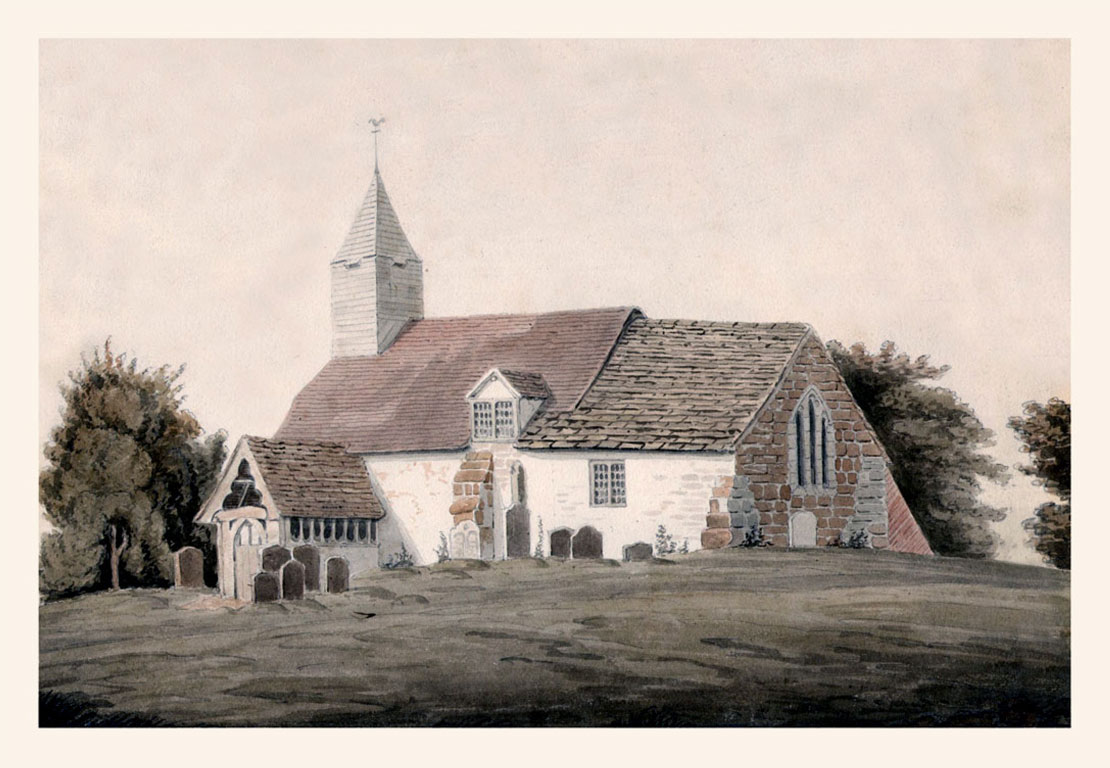 |
The Chapel at Knightwick today was superceded by the above church, shown here in another wonderful painting (thanks to Peter Walker - now Church Warden of the Knightwick, Doddenham and Broadwas Parishes) Reverend Stillingfleet, either his own painting or from his own records.
"The Parochial Church of Knightwick is situate about a mile from the inn, and at a considerable distance from the main road. The little building seemed half swallowed up among the graves and the nettles with which it is surrounded, though an effort had been lately made to disinter it by cutting a ditch close to the base of the walls. This graveyard, I am told, was not consecrated till about 70 years ago, previously to which the parishioners were buried at St. John’s and at Whitbourne. The venerable grave-digger was at first very exclusive, and would persist in putting the Doddenham people in a separate part of the yard, while all strangers who died in the parish were unceremoniously thrust into a corner. This ancient functionary, I understand, is quite a character, being most assiduous in his inquiries after invalids, with the view of ascertaining what plot of ground would best suit their taste and inclinations.
The church is an oblong building, with a wooden porch, and a wooden bell-cot or tower with pyramidal cap, The east window has a triple light; there is no window at the west end, and the wall is propped up with rude but serviceable buttresses. The windows are chiefly square-headed, in wood frames; and the masonry of the building is so plain, and devoid of characteristics, as to render it difficult to assign a date. The truss-work of the little tower, which bears the churchwardens’ names (Charles Meden and Thomas Boraston) and the date, 1736, is open to the interior of the church, the space underneath it being used for sittings; all the seats are immensely high, and right mouldy in their antiquity, while the reading-desk and pulpit are in one immense box. The floor is of brick, and the chancel is divided by old boards and railing into a variety of compartments, one being for school-children, another for the communion table, but all of the rudest and commonest description, and smelling of the beginning of the 18th century. The roof is semi-hexagonal; and the walls, which are tied across with plain beams, are inscribed with sentences of Scripture painted with-in black borders. The font is semi-circular, massive, and entirely devoid of ornament. A few trifling charities are recorded here; and on the floor is a plain stone to Grace Lane, the daughter of Colonel Lane, of Bentley, Staffordshire, who died in 1721, aged eighty. This lady must have been niece to the Mistress Jane Lane, in whose escort Charles 11, disguised as a servant, went from Bentley to Bristol, preparatory to his escape into France. There is a tradition that His Majesty halted in this parish, and, to avoid suspicion, was glad to turn shoe-black at the Talbot inn. It is evident that Colonel Lane had property at Knightwick, which being in the line of route from Bentley to Bristol, the royal fugitive, and the young lady who rode behind him, probably rested here, but whether Charles condescended to handle the grease-pot or not (there was no “Warren’s jet blacking” in those days) no evidence remains to tell."Extract from the late Ald. John Noakes’s “Rambles in Worcestershire” or “Stray Notes on Churches and Congregations,” published 1851
©peh

